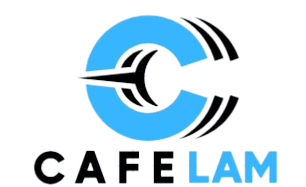As technology continues to evolve and advance, it has become increasingly apparent that time is a precious commodity. This is especially true in the fast-paced world of business, where every second counts towards achieving success. That’s why an efficient team is crucial for any company looking to stay ahead of the game.
In this blog post, we’ll delve into the many benefits of time software monitoring and how it can revolutionize the way your team operates. Read on.
What is Time Software Monitoring?
Time software monitoring involves using digital tools to track the time employees spend on various tasks during their workday. These tools allow managers to gain insights into individual and team activities. It helps to:
- monitor productivity
- identify time-wasting behaviors
- provide data-driven decisions for improvement
Time tracking can go beyond just logging work hours. It also tracks activities, tasks, and projects. This offers a comprehensive overview of how team members are allocating their time.
Some common features of time software include:
- real-time tracking
- activity monitoring
- task management integration
- productivity reports
- automatic time logs
Popular time-tracking tools like Toggl, Harvest, and Clockify allow managers to track time spent on specific tasks or projects. While also helping team members manage their time more effectively.
The Benefits of Time Software Monitoring for Teams
Time software monitoring is a game-changing tool that can greatly enhance the efficiency of your team. Here are some of its benefits:
Improved Focus and Accountability
One of the primary benefits of time software monitoring is that it helps teams stay focused. When employees know their time is being tracked, they are less likely to procrastinate or get distracted by non-work-related activities. This sense of accountability helps employees prioritize their tasks and manage their time more consciously.
By identifying patterns in how time is spent, managers can also address inefficiencies. For instance, if an employee consistently spends too much time on low-priority tasks, managers can intervene.
This offers guidance or helps with task prioritization. This level of accountability creates a culture of responsibility and ensures that everyone is aligned toward achieving the team’s goals. Employee time tracking is very crucial.
Data-Driven Decision Making
Time software provides valuable insights into team members’ work habits, performance, and task management. Managers can use this data to identify trends. Also, to make informed decisions about how to improve processes.
For example, time tracking can reveal which tasks are consuming the most time or which processes are causing delays. Managers can use this data to identify bottlenecks in the workflow and find solutions to streamline operations. If a team member is struggling to manage their workload, the data can offer insights into whether they need additional support or resources.
By leveraging data-driven insights, teams can make adjustments in real time to enhance productivity. Also, to avoid common pitfalls that would otherwise go unnoticed.
Enhanced Productivity
Time software monitoring allows teams to optimize their work hours by helping them focus on high-priority tasks and reducing time spent on non-essential activities. Knowing that their time is being tracked, employees tend to stay more productive throughout the day.
These tools also help teams identify their peak productivity hours. Many workers experience higher levels of focus and efficiency during specific times of day.
Time tracking software can show when a person is most productive and this data can be used to optimize work schedules. This is whether it’s:
- in the early morning
- after lunch
- towards the end of the day
By using time software to monitor task completion rates and activity levels, teams can avoid overworking employees by spreading tasks more evenly and ensuring workloads are realistic.
Reduced Administrative Overhead
Gone are the days of manual time tracking, timesheets, and spreadsheets. Time software automation greatly reduces the administrative burden on managers and HR departments. With accurate, real-time data, team members no longer need to manually log their hours or submit time reports.
Instead, time-tracking tools automatically record all work-related activity and generate reports. This is without additional input from the employee.
This not only saves time for both employees and managers but also ensures that records are more accurate. Time software can also integrate with payroll systems to calculate wages based on tracked hours.
It eliminates the risk of errors or discrepancies. As a result, the team can focus on work that adds value, instead of getting bogged down by administrative tasks.
Better Work-Life Balance
When work hours are not properly tracked, employees can easily slip into the habit of overworking. This can lead to:
- burnout
- stress
- reduced job satisfaction
Time software monitoring helps teams establish a clearer work-life balance. This is by:
- tracking hours more accurately
- helping individuals stay on top of their workload
By setting clear expectations for work hours and monitoring usage, managers can ensure that employees do not overextend themselves. For example, time software can alert managers or employees when they have reached a certain number of hours worked.
This encourages them to take breaks or leave on time. This promotes healthy working habits and ultimately improves employee well-being.
How to Implement Time Software Monitoring Effectively
To maximize the benefits of time software monitoring, proper implementation is key. Here are a few steps for effective adoption:
Choose the Right Tool
Not all-time software tools are created equal. It’s important to evaluate the needs of your team and choose a tool that aligns with your workflows.
This is whether it’s a simple time tracker or a full-featured project management tool with time-tracking capabilities. This is very useful, especially for time tracking for architecture firms.
Train Your Team
Introducing new software can be challenging, so provide training to ensure your team is comfortable using the tool. Explain how the software will help improve efficiency, and offer support during the onboarding process.
Set Clear Expectations
It’s important to set clear expectations with employees about how the software will be used and why it’s being implemented. Ensure the focus remains on productivity and efficiency, not on micromanagement.
Foster Transparency and Trust
Trust is critical when implementing time software. Transparency in how the data is used and sharing the benefits of tracking time can help alleviate concerns from team members about feeling monitored.
Update Your Software Monitoring Now
Time software monitoring is an essential tool for any team looking to improve their efficiency and productivity. By tracking and analyzing the time spent on tasks, teams can identify areas for improvement and make necessary adjustments.
It’s time to take your team’s productivity to the next level. Implement real-time tracking software today. Start using efficiency management systems now!
If you want to read more articles, visit our blog.







